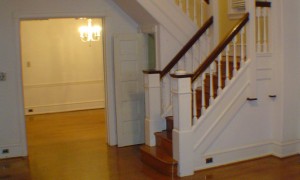There can be something quite romantic about buying an older home. Prospective homebuyers are often smitten when they first encounter the unique character and charm of a 100+ year-old home. Decades of history and stories are reflected in its small imperfections and quirks. The unexpected nooks and crannies, ornate woodwork and beautiful built-ins can be hard to resist. Or perhaps it’s simply the lure of an affordable fixer-upper situated in a desirable location.
Love at first sight is a good thing when you’re shopping for a new home. But when that home is 100+ years old, you need to make sure you’re not sweeping potentially costly issues under the rug as you get swept off your feet.
If you want to buy an older home, there are a few important issues you should be aware of before you close the deal. Here are some ways to help avoid future heartache (and pocketbook pain):
1. The Dreaded Lead. Approximately 87% of homes built before 1940 contain lead-based paint, according to the U.S. EPA. The toxic substance, known to cause a variety of health problems, especially in young children, was frequently used in household paint prior to 1978, when its use was banned by the federal government. Even if the home you’re considering has newer paint, it’s highly possible lead could still be hidden beneath the fresh paint layers.
The good news is that if the paint is in good repair, the lead usually doesn’t pose a risk. The hazard comes when lead-based paint starts breaking down, peeling or chipping. If that’s the case, or you have particular concerns about lead exposure, the best course of action is to hire a certified inspector to test for lead. According to the EPA, the average lead removal project costs about $10,000, so if the home tests positive, you need to consider that in your overall budget.
2. Energy (In)efficiency. Charm may not be the only thing oozing from those lovely double-hung 19th century windows, old steam radiators or original faucets. While charming windows, mechanicals and fixtures might match the style of an older home, they also tend to be inefficient in their energy use. That means you could be facing some surprisingly steep energy bills after you move into the home.
If possible, ask about the previous owners’ average monthly gas or electricity costs to get a sense of what to expect. You’ll also likely want to plan and budget for energy-efficient replacements (or refinishing, in the case of windows). Consider smart home products like smart thermostats that can help save you time and money.
Find out the age of major mechanicals, price out the cost of new units, and make a schedule for replacing them based on when they’ll reach the end of their useful life. Also, make sure you leave some wiggle room for unexpected discoveries, like replacing a leaky toilet or faucet.

3. Structural struggles. Even the most well-built homes fall prey to the ails of time, meaning foundations sink, structures shift and moisture can find its way into pilings and foundation supports. You should keep a close eye out for signs of trouble, in the form of wall cracks, sloping floors, stuck windows and doors that refuse to close. If you see any signs of trouble, have your inspector take a look to provide a second opinion (ask them to pay particular attention as well). If you identify issues, you’ll want to bring in an expert, such as a structural engineer, to better assess the problem and provide an estimate for fixing the damage. A few hundred dollars may remedy small exterior cracks, while extensive repairs to the foundation could run tens of thousands of dollars.
4. Careless renovations. Sometimes an older home has remained relatively untouched over years, or has been tastefully and professionally updated. In other instances, previous owners may have attempted renovations that didn’t go so well. If there are clearly apparent additions (like a basement bedroom) or major renovations, it’s a good idea to confirm the work was permitted by the city. If it wasn’t, you may want to dig a little deeper to ensure the work was completed with a high level of quality and meets legal requirements for the space, especially when it relates to electrical systems and structural changes or additions. Also beware of partially-completed renovations. It could mean the work was a DIY project and not performed by a professional, or that the person doing the work discovered a larger issue and abandoned the problem rather than fixing it.
Buying an older home can be a very rewarding experience, but it’s especially important to be aware of potential issues to avoid unexpected problems in the future. Talk to your agent about finding the right home for you.





